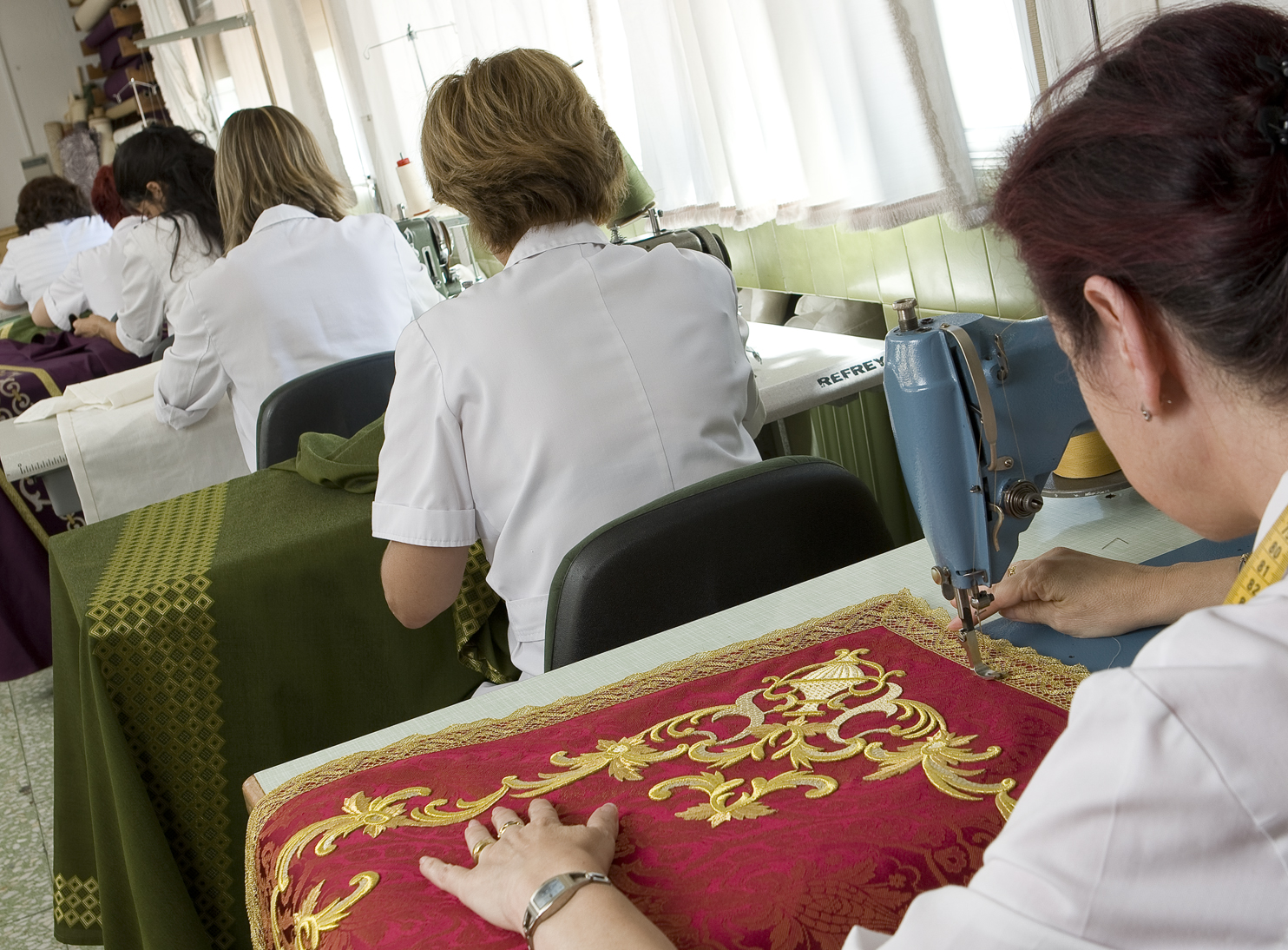For several months we have been working on a new line of textile design that will soon be added to the current catalog: the collection of chasubles. Angelica. We want to take this opportunity to highlight the liturgical importance of this type of ornaments, their origin, their symbolism and how they are designed and elaborated in our Artisan workshop. Los Rosales.
THE ORIGIN OF LITURGICAL VESTMENTS
Textile vestments at the service of the liturgy have played an important role in worship. In the Old Testament, rich vestments were used to give solemnity to the celebrations and to dignify the figure of the priest, who addressed God on behalf of the people. However, we know that In the first centuries of Christianity, the civilian population and the clergy wore the same type of vestments, those of the Roman Empire. The chasuble, in fact, derives from the ancient Roman pénula, a circular and hooded garment woven in wool that served as protection against the cold and bad weather. The same garment was used by lawyers, tribunes and senators and was a sign of the category of the office they held.
From the 6th Century the barbarian mode of dress was introduced into the West. The Church then asked the clergy to maintain the ancient dress in a way that the ornaments destined to worship were again distinguished and took on a symbolic meaning: the beauty of the ornament became again a vehicle of the dignity of the priest and of the solemnity of the offices they celebrated.
THE CASULLA
The chasuble, from the Latin "casula" meaning "small house" or tent. Today it is the outer vestment worn by the priest, above the alb and stole, as a cape.
Like every liturgical element, the chasuble also has a symbolic meaning: that of charity, since covers the minister completely, just as charity covers the miseries of sinners.. In addition, by its placement on the shoulders, it makes reference to the yoke of ChristThe priest accepts it when he takes up his ministry.
It was originally made of wool, a material that was replaced by silk around the 8th century. From the thirteenth century onwards, chasubles of great value began to be made of velvet, damask or brocade, adorned with embroidery and enriched with materials such as pieces of gold and precious stones. Later, in the 16th and 17th centuries, the art of embroidery reached great splendor in Spain, giving rise to pieces of great artistic value.
LOS ROSALES WORKSHOPS
Los Rosales was born in 1958 as an artisan textile creation workshop, a place where each piece is individually designed and handmade. Many of its designs are inspired by historical compositional schemes: motifs from Coptic iconography, medieval arabesques and lacework, damasks inspired by Renaissance fabrics... This has resulted in unique models made exclusively for the Vatican and special liturgical vestments destined for bishoprics around the world.

Since its origins, the company has always aimed at artistic creation and quality craftsmanship, starting with the choice of materials: silk and natural linen, gold threads, pearls and rhinestones... and continuing with a great mastery of the hand embroidery technique, without neglecting technological innovation. The use of new materials with excellent properties for the preservation of fabrics is becoming more and more common.
Los Rosales also offers personalized advice on the maintenance of products and the restoration and preventive conservation of historical ornaments.
In addition to the hand embroidery two other types of embroidery are used: appliqué embroidery and shaded embroidery.
The hand embroidery on appliqué consists of a drawing, which is transferred by means of strokes on the fabric, stretched on the stretcher. The desired shapes are cut out of silks and tisues, glued on the reverse side and applied to the base fabric. Finally, they are finished around the perimeter with gold thread forming, stitch by stitch, the designed pictorial element.
The nuanced embroidery is a technique of oriental origin. It consists of tracing the design on the base fabric covering the shapes. It requires great manual dexterity and sensitivity in the choice of color gradients so that the applied and fixed threads reproduce the volume and light with the effect of a painting technique.
OUR CHASUBLE COLLECTIONS
Semi-gothic, Gothic and monastic
